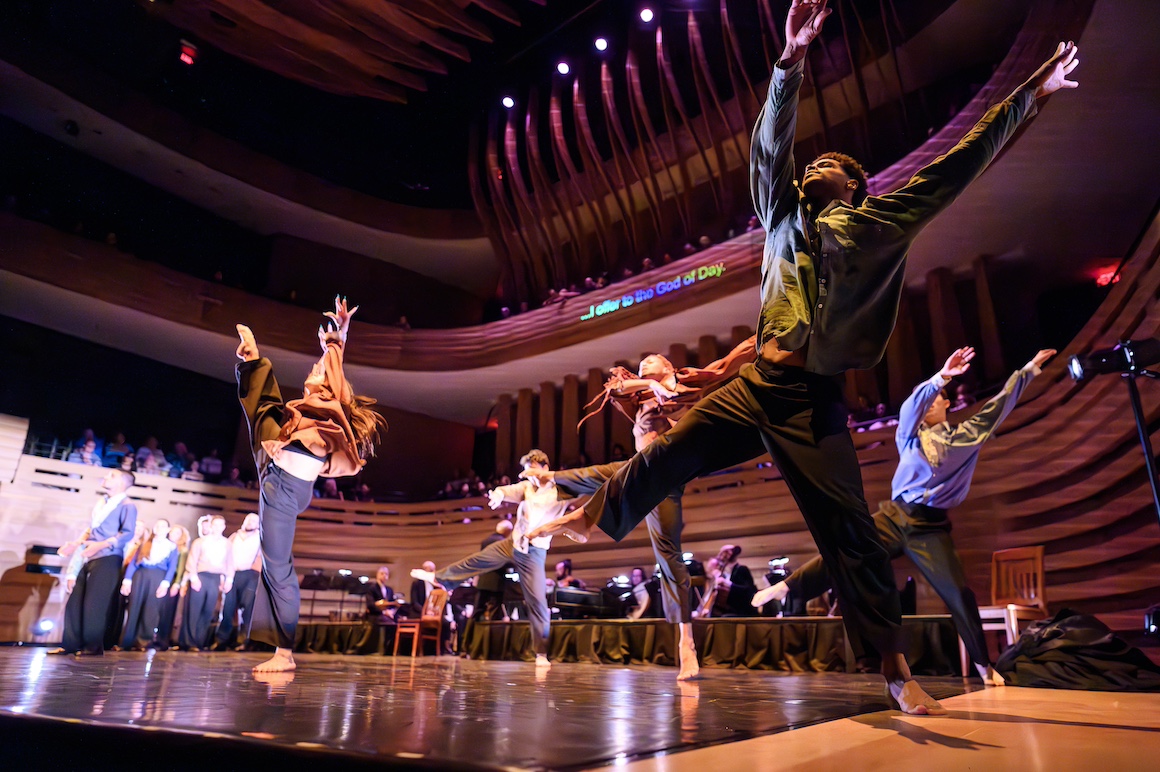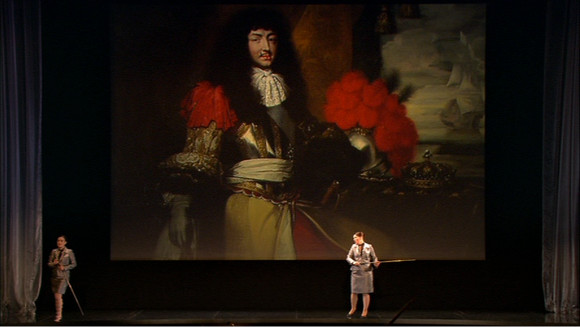Deborah Warner’s entry point to Purcell’s Dido and Aeneas is the, almost certainly apocryphal, story about it premiering in a girls’ boarding school. At various points in the action we get a chorus of schoolgirls in modernish uniforms commenting silently on the action. They are on stage during the overture, are seen in dance class during some of the dance music and queue up for the Sailor’s autograph. It’s quite touching and adds to the pathos of the basic, simple, tragic story. Warner also adds a prologue (the original is lost). In Warner’s version Fiona Shaw declaims, and acts out, poems by Ovid/Ted Hughes, TS Eliot and WB Yeats. These additions aside the piece is presented fairly straightforwardly in a sort of “stage 18th century” aesthetic. The witch scenes are quite well handled with Hilary Summers as a quite statuesque sorceress backed up by fairly diminutive (and, for witches, quite cute) Céline Ricci and Ana Quintans. Their first appearance is quite restrained but they go to town quite effectively in their second appearance.
 Continue reading →
Continue reading →










